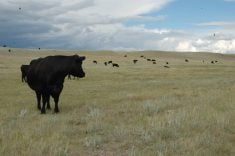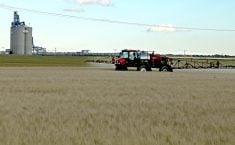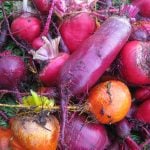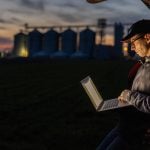WINNIPEG — In the age of social media, online influencers and algorithms, it’s become nearly impossible to predict which story will become an online juggernaut.
In a recent and much publicized case, infected birds at a Canadian ostrich farm became a global controversy that drove immense traffic to news websites.
“This is a good example of how almost any event can be made into a political wedge issue,” said Timothy Caulfield, a University of Alberta professor and author of numerous books about scientific communication.
Read Also

Internet of Things tapped for better emissions insights
Interconnected field sensor fleet allows better soil monitoring coverage and, hopefully, live insights on farm greenhouse gas emissions and nitrogen fertilizer application for farms.
“And the discourse around the topic — on social media, in the popular press and by online influencers — leads to further distrust of scientific institutions.”
For much of 2025, about 300 ostriches at a British Columbia farm became the stars of dramatic conflict between the institution determined to cull the flock and the activists, celebrities and billionaires who tried to save the ostriches.
The saga began nearly a year ago, after it was reported that ostriches had died on the farm and the likely cause was H5N1, a deadly form of avian flu.
Shortly after, the Canadian Food Inspection Agency ordered that the remainder of the flock be culled to prevent the further spread of H5N1.
That triggered a months-long legal fight that went all the way to the Supreme Court of Canada. On Nov. 7 the court dismissed an appeal from the ostriches’ owner to prevent the cull. The next day, marksmen representing the CFIA killed all the ostriches on the farm.
That prompted strong reactions in Canada and the United States:
- An American billionaire, John Catsimatidis, held a press conference where he suggested the U.S. government would conduct an investigation into the CFIA and what it did to the ostriches.
- Vandals in Kelowna, B.C., threw eggs at and smeared feces on the local CFIA office.
The highly charged reactions speak to the power of social media and online influencers and how government agencies such as the CFIA struggle to tell their side of the story, said Heidi Tworek, a social scientist at the University of British Columbia.
The powerful backlash from a vocal minority could be a hangover from COVID-19 and public distrust of scientists that unfolded during the pandemic.
“Part of what we’re seeing … in this case were some dynamics we saw in the pandemic,” Tworek said.
One major consequence from the pandemic was a loss of trust in vaccines. Fewer parents are now vaccinating their children against diseases such as measles, prompting a rise in cases and Canada eventually losing its “measles free” status.
A similar fallout might happen because of the ostriches.
More livestock farmers may refuse to comply with CFIA orders because they don’t agree with the agency’s science or its policy of “stamping out” diseases by culling a herd or a flock.
What’s obvious from the ostrich saga is that Canadians know little or nothing about the CFIA and its role, Tworek said.
“In a moment like this, the lack of knowledge about it (the CFIA) opens up a broad space of many interpretations of what it’s doing and why it’s doing (it),” Tworek said.
Fighting back against misinformation is difficult and getting harder, thanks to fake videos and generative AI.
However, organizations such as the CFIA can get ready for the next crisis by producing basic information about their role and the science of food and animal safety, Tworek said.
“What do you do before hand, so you have very clear explanations on your website about what you do, which means explanations that make sense to a layperson.”
It’s a safe bet that Canada will have another disease outbreak in a herd of livestock sometime in the future. Therefore, the livestock industry needs to be ready.
“When there is some sort of epidemic … some sort of politicization is going to happen. Pinpointing the exact instance where it’s going to happen, that’s where it gets difficult.”
















